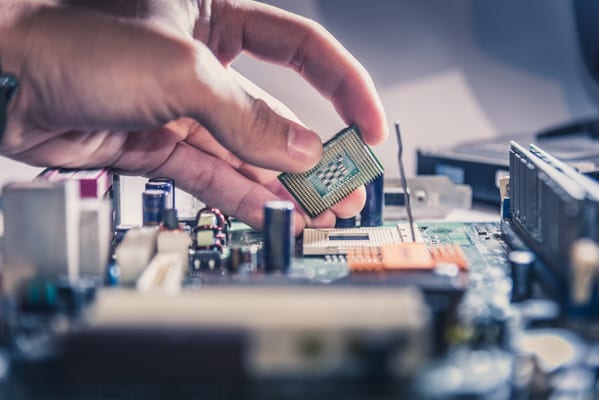
How does Microprocessor command external devices?
Global electronic component supplier AMPHEO PTY LTD: Rich inventory for one-stop shopping. Inquire easily, and receive fast, customized solutions and quotes.
A microprocessor commands external devices (like LEDs, motors, displays, sensors, or other peripherals) using three main types of communication buses:

🔌 1. Address Bus
-
Purpose: Selects the specific device or memory location.
-
The microprocessor sends a unique address to specify which device or I/O port it wants to communicate with.
🔁 2. Data Bus
-
Purpose: Transfers data to/from the external device.
-
The microprocessor can either send commands/data to a device or receive data from it.
🕹️ 3. Control Bus
-
Purpose: Sends control signals to coordinate the operation, like read/write actions.
-
Common control signals:
-
RD̅ (Read) – to read from device
-
WR̅ (Write) – to write to device
-
IO/M̅ – to differentiate between I/O and memory access
-
INT – for interrupt handling
-
🛠️ How It All Works: Step-by-Step
👉 Example: Sending a Command to Turn ON an LED
Assume the LED is connected to an I/O port at address 0x01.
-
Place the address 0x01 on the address bus.
-
Place the data (e.g.,
0x01to turn on LED) on the data bus. -
Activate the WR̅ (write) signal on the control bus.
-
The external device (LED controller) receives the data and turns on the LED.
🧠 Modes of Communication
| Mode | Description |
|---|---|
| Memory-Mapped I/O | Devices are treated like memory, use full address/data/control bus. |
| I/O-Mapped I/O (Isolated I/O) | Special IN/OUT instructions are used. Address space is separate from memory. |
🧩 Example Application: Controlling a DC Motor
-
The motor driver is connected to a port.
-
Microprocessor writes control values to that port (e.g., direction and speed).
-
The driver receives the command and powers the motor accordingly.
📦 Real-World Applications
-
Home automation: Sending commands to relays, sensors, or displays.
-
Robotics: Controlling motors and servos based on sensor data.
-
Industrial control: Turning on pumps, alarms, or actuators.
✅ Summary
A microprocessor commands external devices by:
-
Addressing them (via Address Bus),
-
Transferring data (via Data Bus),
-
Controlling operation timing and type (via Control Bus).
Related Articles
- ·The Application of Sensors in Smart Home Appliances
- ·The best MCUs/MPUs for industrial humanoid robots
- ·How do NPN and PNP sensors convert to each other?
- ·What is ARM microprocessor? What is the difference between an ARM processor and a normal processor?
- ·Comparison of FPGA, CPLD, PLC, Microprocessor, Microcontroller & DSP
- ·What distinguishes a microprocessor from a microcontroller?
- ·Microprocessor vs. Microcontroller vs. System on Chip: What are the differences among them?
- ·Microcontroller vs. Microprocessor vs.Microcomputer: Which is Better?
